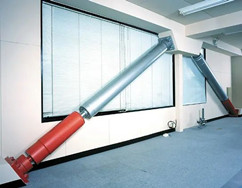Reinforced concrete (RC) is the most commonly used construction material used these days, primarily owning to its low cost, easy availability of materials, simpler execution without requirements of any special machineries or labour. Generally, the RC buildings are analyzed and designed such that, the moment resisting frame actions are developed in each member. The masonry infill wall are normally considered as non-structural elements used to create partitions or to protect the inside of the building and thus are ignored while analysis and design. However, under the action of lateral forces like the once due to earthquake and wind, these infill wall panel’s stiffness, strength and mass affect the behavior of RC frame building.Earthquakes are thus a severe structural hazard for structures designed for gravity loads as they may not sustain the horizontal shaking. Structures like buildings, elevated surface reservoir, bridges, towers, etc. may experience extreme vibrations during earthquake. Vibration control (VC) using passive supplemental energy dissipators, such as friction dampers , is an effective method for reducing the response of building structures to seismic excitations. To date, many studies on VC structures incorporating passive damping devices have been experimentally and numerically conducted. Various friction devices have been studied, including rotational type, beam-column joint type, axial or brace type, wall panel connection type, and stud type configurations. A rigid-plastic or elastic-plastic hysteresis loop is often used as a numerical load-displacement relationship model for friction slider elements. Optimization of passive hysteretic energy dissipation devices, including friction dampers, is an important challenge in structural VC for buildings subjected to earthquakes. For details, please click https://systems.enpress-publisher.com/index.php/JGC/article/view/564 |






